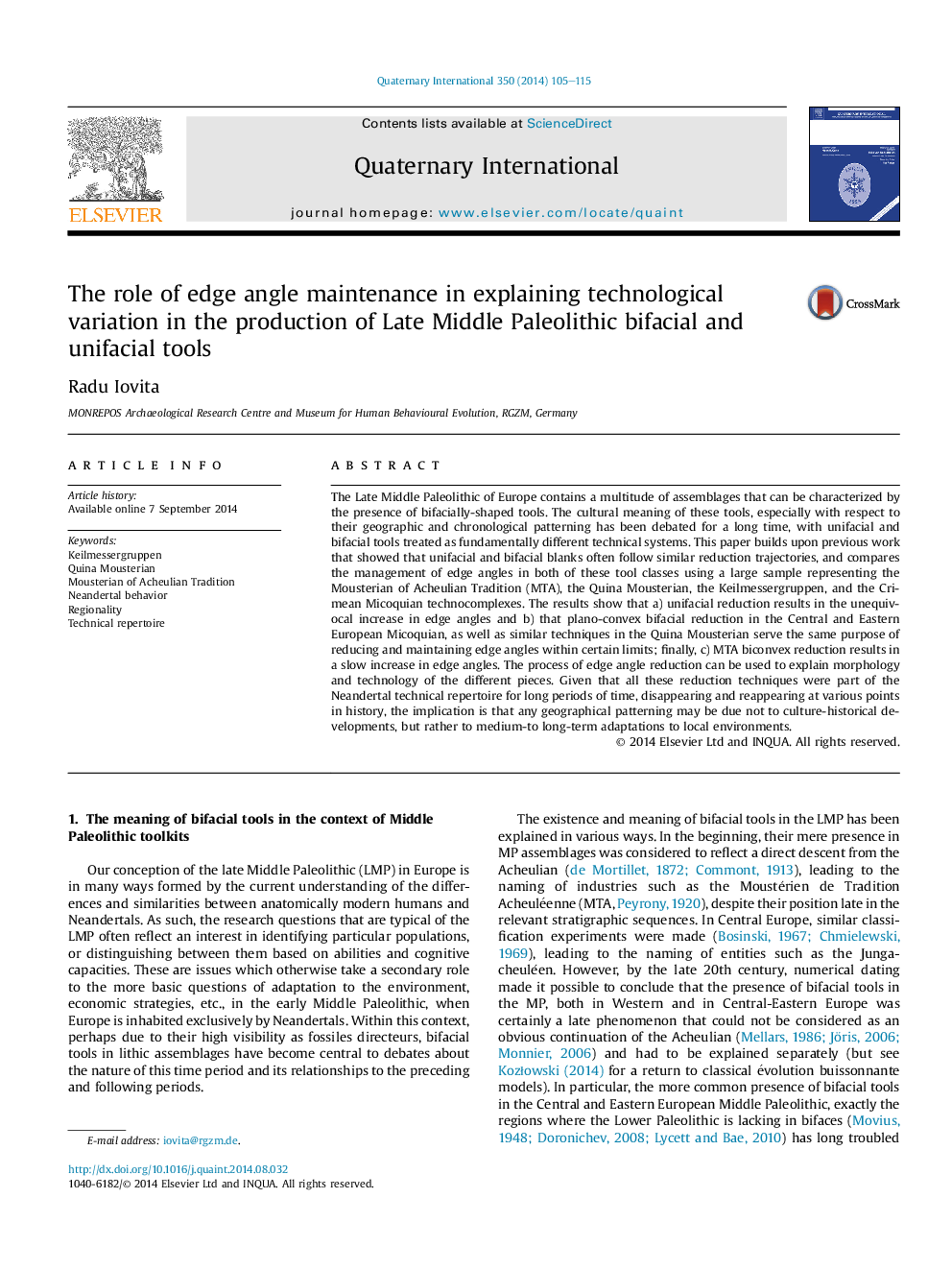| Article ID | Journal | Published Year | Pages | File Type |
|---|---|---|---|---|
| 1041477 | Quaternary International | 2014 | 11 Pages |
Abstract
The Late Middle Paleolithic of Europe contains a multitude of assemblages that can be characterized by the presence of bifacially-shaped tools. The cultural meaning of these tools, especially with respect to their geographic and chronological patterning has been debated for a long time, with unifacial and bifacial tools treated as fundamentally different technical systems. This paper builds upon previous work that showed that unifacial and bifacial blanks often follow similar reduction trajectories, and compares the management of edge angles in both of these tool classes using a large sample representing the Mousterian of Acheulian Tradition (MTA), the Quina Mousterian, the Keilmessergruppen, and the Crimean Micoquian technocomplexes. The results show that a) unifacial reduction results in the unequivocal increase in edge angles and b) that plano-convex bifacial reduction in the Central and Eastern European Micoquian, as well as similar techniques in the Quina Mousterian serve the same purpose of reducing and maintaining edge angles within certain limits; finally, c) MTA biconvex reduction results in a slow increase in edge angles. The process of edge angle reduction can be used to explain morphology and technology of the different pieces. Given that all these reduction techniques were part of the Neandertal technical repertoire for long periods of time, disappearing and reappearing at various points in history, the implication is that any geographical patterning may be due not to culture-historical developments, but rather to medium-to long-term adaptations to local environments.
Keywords
Related Topics
Physical Sciences and Engineering
Earth and Planetary Sciences
Geology
Authors
Radu Iovita,
